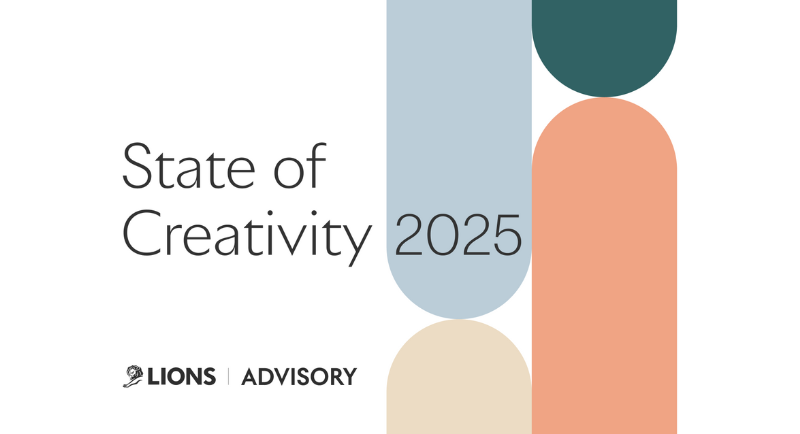LIONS has revealed creative confidence, belief in bold and original creative ideas to drive business success are being knocked by the inability to develop high-quality insights and a lack of cultural agility in The State of Creativity 2025.
The annual study, authored by LIONS Advisory and includes quantitative and qualitative data analysis, expert commentary and advice from industry leaders, creatives, and brand marketers, serves as a practical tool helping marketers understand the key challenges, trends and opportunities for creativity in 2025.
Now in its fifth year, is based on a global survey with over 1,000 marketers and creatives, fielded between November 2024 and January 2025, and one-to-one conversations with industry leaders.
The research shows that risk aversion is holding businesses back. ‘Creative risk-taking’ is defined in the survey as bold, unconventional ideas that challenge norms and engage audiences in unexpected ways. Only 13% of respondents to LIONS’ State of Creativity 2025 survey view their companies as risk-friendly, whilst 29% of brands admit to being highly risk-averse.
However, risk-taking brands generate four times higher profit margins, according to research by WARC and Kantar. And brands with a high appetite for creative risk are 33% more likely to see long-term revenue growth, reports Deloitte.
“The State of Creativity report is a unique window into the global creative landscape,” Patrick Jeffrey, VP LIONS Advisory, said.
“The findings from this latest research show that largely due to a lack of solid insights and cultural relevance, we are seeing less ‘creative risk-taking’, which involves stepping outside traditional boundaries and surpassing category conventions. Addressing these two key barriers will unlock creative confidence and drive better long-term business results.
The two key barriers to creative confidence and how to overcome them, outlined in the report are: The insight famine: Half of brands (51%) claim their insights are too weak to develop bold creativity, and only 13% rate them as strong
The State of Creativity survey shows that companies with stronger insight development capabilities are far more open to taking creative risks. However, half (51%) of the companies surveyed rate their ability to develop high-quality insights as poor or very poor.
Only 13% rate their ability to develop high-quality insights as very good or excellent. The challenges to developing high-quality insights include a lack of understanding and clarity of what makes a good quality insight, not enough priority placed on insight development and insufficient time allocated for deep insight exploration.
The survey highlights that the stronger the brand-agency relationship, the better the brand sees its ability to develop strong insights. Both teams and methods should be diverse to avoid personal preference rather than consumer understanding. And the use of AI and synthetic data can enhance efficiency and reduce biases and limitations.
The culture lag: Over half (57%) of brands struggle to react quickly to cultural moments. A lack of insights is slowing brands down when it comes to reacting to cultural moments, costing them creative confidence. The report survey showed a positive correlation between brands’ perceived ability to react to cultural shifts and their appetite for risk.
Yet 57% of brands struggle to react quickly to cultural moments, with only 12% rating their ability to do so as ‘excellent’. The challenges to cultural agility were too many layers in the approval process, limited resources and investment, and difficulty aligning brand insights with cultural trends.
Companies are advised to build structures that allow for swift, strategic action; respond with resonated creativity; and shape culture rather than chase it. Brands that embrace risk and push creative boundaries are the ones best equipped to move with culture.
This year’s survey also showed that brands are increasingly shifting toward short-term activities, rising from 53% in 2023 to 63% in 2025. But while short-term gains might be tempting, agility comes from brand-building which allows for spontaneous moments.
Jeffrey concluded: “To boost creative confidence, we advise to invest in additional training to enhance teams’ skills and capability. As teams upskill and confidence grows, so will the appetite for bigger, bolder work.”
